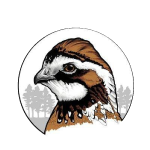Resources
Wildland fire resources are critical to understanding the complexities of how to best manage the natural and human elements of wildland fire. This space contains information to increase information sharing within the community of practice working on Wildland Fire and Prescribed Burning.
Scientists participate in a Prescribed Fire Science Consortium collaborative fire research event at Tall Timbers Research Station. Photo: David Godwin, Southern Fire Exchange / University of Florida.
Monitoring Trends in Burn Severity Interactive Viewer
The MTBS program was established to provide a consistent methodology to assess and document the effects of fire at a national scale. Since the program’s inception in 2005, MTBS mapping methods have evolved to accommodate changes and advancements in technology, software, satellite data and the availability of reliable fire occurrence data. It is anticipated these methods will continue to evolve into the future, however, the MTBS mapping approach has consistently occurred in five primary steps: 1. Fire Occurrence Data Compilation; 2. Landsat Scene Selection and Image Pre-processing; 3. Perimeter Delineation; 4. Burn Severity Interpretation; and 5. Data Distribution.
Planning for Growth and Open Space Conservation Webinar Series
In 2012, we embarked on a project to help inform natural resource professionals, land use planners, private landowners and others about the issues facing our forestlands – both public and private – and to help them learn about opportunities and strategies to conserve open space through a series of monthly webinars. Below is the archive of these webinars. We hope you find them interesting!
SE FireMap Version 1.0 BETA Product Information
Learn more about the dataset development process, attribute descriptions, known issues, limitations, considerations, and references.
SE FireMap Version 1.0 Data Use Agreement
This agreement document provides details on permitted uses, expectations and other conditions which may affect eligibility to download and utilize the data. Download and Submit this completed form to the following email: SEFireMap@talltimbers.org






















